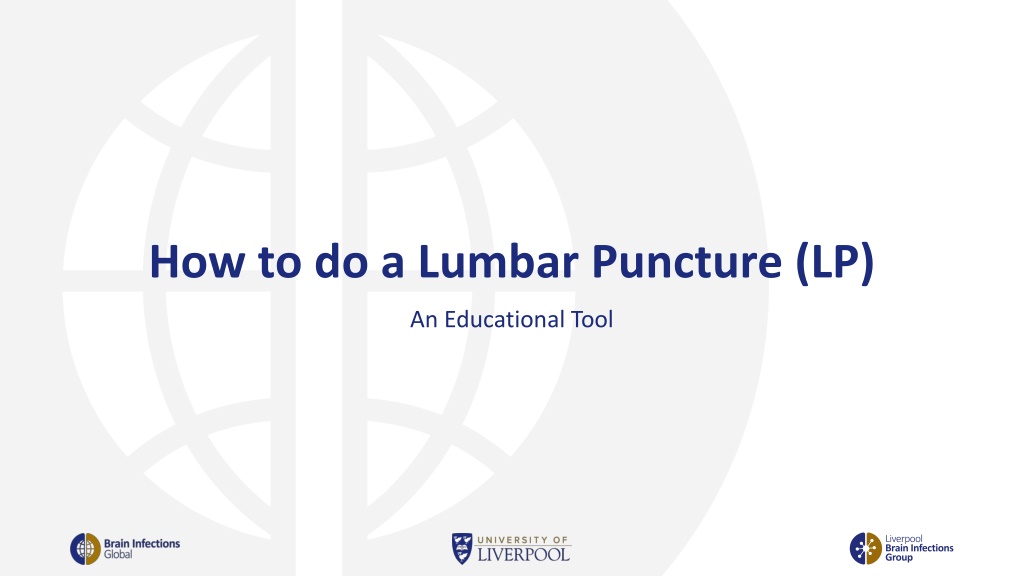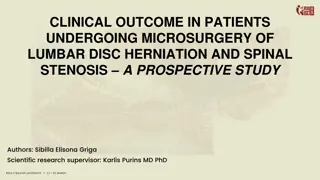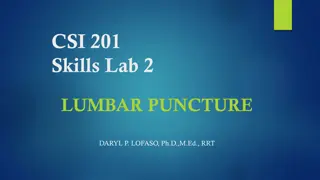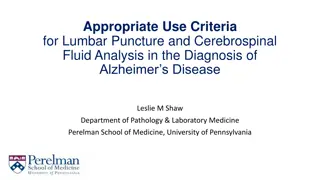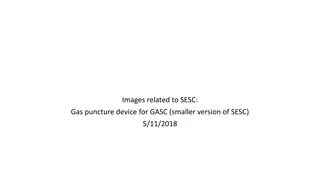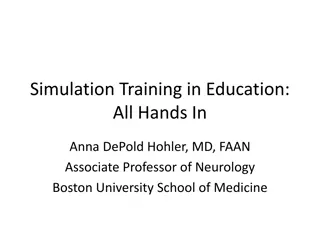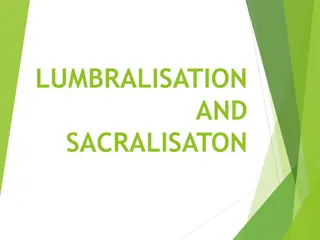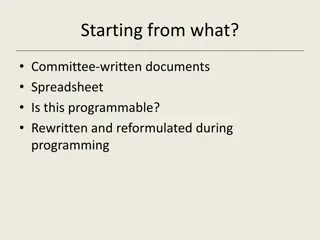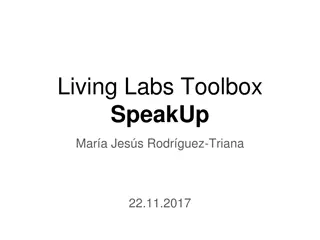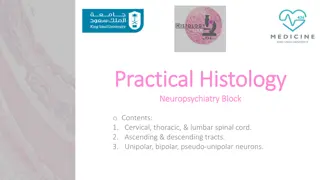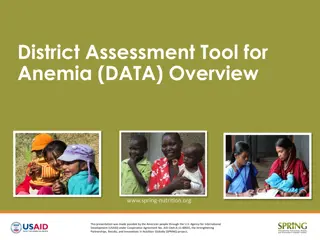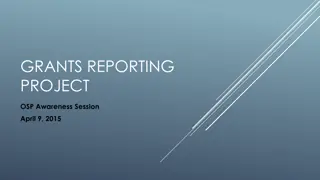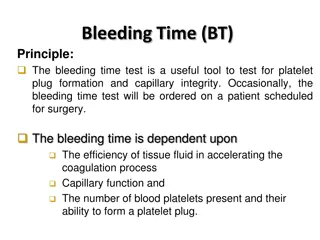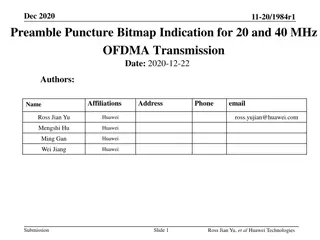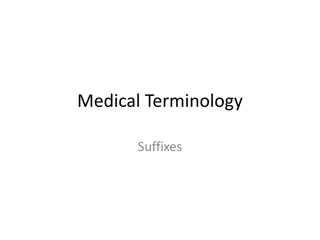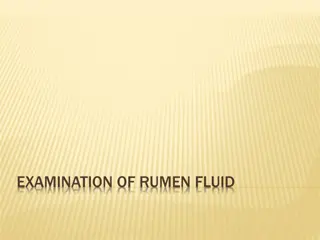Lumbar Puncture (LP) Educational Tool Overview
This educational tool provides information on how to perform a lumbar puncture (LP) for brain infections. It covers learning objectives, contraindications, and steps involved in the procedure. The content includes visuals and notes to enhance understanding and adaptation.
Download Presentation

Please find below an Image/Link to download the presentation.
The content on the website is provided AS IS for your information and personal use only. It may not be sold, licensed, or shared on other websites without obtaining consent from the author. Download presentation by click this link. If you encounter any issues during the download, it is possible that the publisher has removed the file from their server.
E N D
Presentation Transcript
How to do a Lumbar Puncture (LP) An Educational Tool
Brain Infections Global This set of teaching slides is produced through Brain Infections Global a UK National Institute for Health Research (NIHR) Global Health Research Group on Acute Brain Infections run by Liverpool Brain Infections Group and partners They were developed with support from PATH, the Bill and Melinda Gates Foundation, and NIHR You can get more information on Brain Infections Global, including access to our other teaching resources, here Please feel free to adapt this slide set as needed Please credit The University of Liverpool, NIHR Brain Infections Global, and PATH
Instructions for users This slide presentation provides an overview of performing a lumbar puncture (LP). Below many of the slides, there are notes to explain the information in the slide. You should adapt the presentation for your own use.
Learning Objectives Participants will: Know how to prepare a patient for LP. Revise the steps for safely performing an LP. Know what tests can be performed on CSF that is collected.
Contraindications to an immediate LP in suspected Brain Infections Imaging needed before lumbar puncture (to exclude brain shift, swelling, or space occupying lesion) Focal neurological signs, other than cranial neuropathies Papilloedema Recent onset seizures Moderate to severe impairment of consciousness Hypertension with bradycardia Immunocompromise (some patients) Other contraindications Bleeding disorder Anticoagulant treatment Sepsis over the spine _____________________________________________________________ Notes There is no agreement on the depth of coma that necessitates imaging before lumbar puncture; some argue Glasgow coma score < 12, others Glasgow coma score <10. Patients on warfarin should be treated with heparin instead, and the drug stopped shortly before lumbar puncture Imaging is preferable in patients with known severe immunocompromise (e.g. advanced AIDS)
Steps in performing a lumbar puncture 1. Obtain informed consent. 2. Gather materials. 3. Position patient. 4. Administer local anesthetic. 5. Insert needle with sterile technique. 6. Measure opening pressure. 7. Collect cerebrospinal fluid (CSF).
Informing the patient Reason for the lumbar puncture: Collection and testing of spinal fluid are standard management for encephalitis patients to direct treatment (e.g., if CSF profile suggests bacterial infection). Potential complications: The most common side effect is a headache which occurs in 10-30% of adult patients. It is managed with bed rest and analgesics and usually disappears in a few days. Soreness of the lower back may also occur. Other risks, including infection, bleeding, leakage of spinal fluid or damage to the spinal cord, are extremely rare. Children tolerate generally lumbar punctures well.
Materials to prepare Materials for sterile technique (gloves, mask) Spinal needle Manometer (typically used in patients > 2 years of age) Three-way stop-cock Sterile drapes Anesthetic Solutions for skin sterilization Adhesive dressing Sponges Get assistant (to help position patient and handle equipment)
1. Place the patient in the left lateral position Get a nurse or other staff member to help you position the patients. The key thing for a successful LP is to spend time getting the the position right, and not starting until it is. The lower back should be as close to the edge of the bed as possible. The back should be perpendicular (at 90o) to the mattress. Ask the patient to curl up and hug his knees as close to the chest as possible ( fetal position ). The neck should be flexed forward. Place a pillow between the patient s knees If physician is left-handed, the right lateral position should be used. The patient may also be positioned sitting upright. However, the lateral position is preferred for accurate measurement of opening pressure.
2. Locate the site Find and palpate the posterior iliac crest. Move your finger down and palpate the L4 spinous process. Mark the puncture site at L4-5 or L3-4 (e.g. put a slight indent in the skin with your fingernail). Source: http://www.emedicinehealth.com The diagrams on the following slides provide illustrations
Site for Lumbar puncture in an Adult Source: http://www.postgradmed.com
Site for Lumbar Puncture in a Child Note: Having the patient curl around a pillow can help ensure proper position. posterior iliac crest Source: Harriett lane - 16th edition
3. Prepare sterile area Use iodine to swab in a circle from the L4-5 area outwards. Cover an area of 20cm diameter. Once dried, remove the iodine with alcohol (to avoid introduction of iodine into the subarachnoid space). Put on sterile gloves. Drape the patient.
4. Anesthetize the area Anesthetize the skin. Anesthetize between the spinous processes. Insert the needle. Draw back to ensure it has not reached the subarachnoid space. Gradually withdraw the syringe while slowly injecting anesthetic into the interspace. Note: For infants local anesthetic is not needed. Instead, may give sugar water solution orally to help soothe.
5. Insert the lumbar puncture needle Insert the LP needle, with stylet, in the midline. Direct the point of the needle to the umbilicus. Keep the needle parallel to the ground. Continue to insert until a slight pop is felt. Withdraw the stylet slightly to be sure the needle is in the subarachnoid space. If there is no CSF return, replace the stylet, advance the needle about 2-3mm, and withdraw the stylet again. When CSF begins to flow, attach a three-way stop-cock. Measure the opening pressure before collecting drops of CSF. Note: Only remove the spinal needle when the stylet is inserted.
Notes on LP needle insertion If the needle strikes bone, withdraw it to just below the skin, then reinsert. If blood slowly drips from the needle when the stylet is removed, discard the needle and start again. Never aspirate CSF with a syringe, as a nerve root may be trapped against the needle and injured. If you are unsuccessful in reaching subarachnoid space check: Is the patient positioned correctly? Is the needle aimed towards the umbilicus? Is the needle in the midline? Is the needle parallel to the ground?
6. Measuring the opening pressure Attach a manometer to the hub of the needle (via three-way stop-cock). Have your assistant gently extend the patient s leg and return his neck to a neutral position. Ensure the patient is relaxed and watch for good respiratory variation of the fluid level as the patient breathes normally. Check the CSF pressure. Remove the manometer. Source: http://www.emedicinehealth.com
7. Collect cerebrospinal fluid (CSF) Allow CSF to flow into sterile tubes. Rubbing the fontanel of an infant may help increase flow of CSF. CSF can be collected for Chemistry Microbiology Antibody testing (e.g. for Japanese Encephalitis IgM) Collect extra tube of CSF to hold in lab for possible later testing. Source: http://www.emedicinehealth.com
Collecting CSF into sterile tubes Source: http://www.emedicinehealth.com
8. Final steps Replace stylet and withdraw the needle. Massage the puncture point with a sterile sponge. Cover with a Band-Aid. Advise adult patients to lie flat in bed for 3 hours, drink lots of water, and limit activity for 24 hours to minimize headache. Note: Children may resume their usual activity.
9. Recording Label tubes with patient information and date of collection. Record immediate results. Appearance of CSF ?clear ?turbid Pressure of CSF Note: pressures over 200mm H2O are probably abnormal
Laboratory tests on CSF Cell count, differential Glucose Protein Gram stain India ink preparation Stain for acid-fast bacilli Microbial PCR Viral, bacterial, and fungal cultures Antibody testing, where appropriate
Example Lumbar Puncture on Video https://youtu.be/yYZxNsnf18Y (DrER.tv)
Brain Infections Global Brain Infections Global: An NIHR Global Health Research Group on Improving the Management of Acute Brain Infections For more than twenty years researchers at the University of Liverpool have been studying brain infections in the UK and internationally. The Liverpool Brain Infections Group has been using a range of research disciplines including epidemiology, clinical and diagnostic studies, host response and therapeutic approaches to study brain infections in Asia, Africa and Latin America. The new Brain Infections Global programme comprises a new National Institute for Health Research (NIHR) Global Health Research Group on Brain Infections, working to improve the management of acute brain infections, at selected hospitals in Brazil, India and Malawi. In addition it provides a framework and networking space for all those interested in neurological infections research and training. More information can be found here.
Acknowledgements Please credit The University of Liverpool, NIHR Brain Infections Global, and PATH
